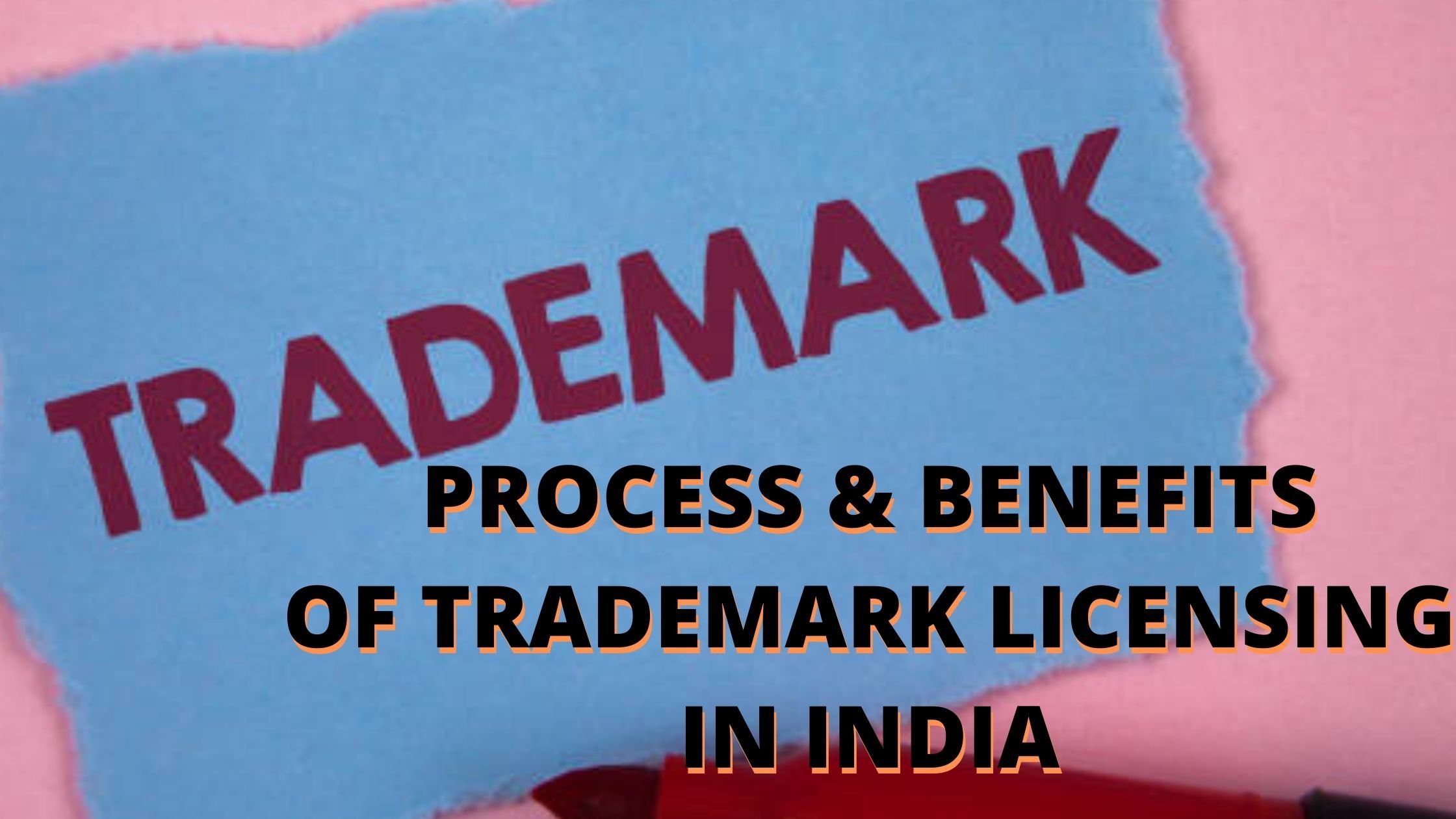Process and Benefits of Trademark Licensing in India
Licensing of Trademark has become a very common practice around the globe because it provides benefits to both the licensor and the licensee. The licensor benefits because of the growing reach and popularity of the mark and earns money through royalty, while the licensee gets to commercially misuse the mark. Licensing must be checked appropriately else it could harm the reputation of the mark. Hence, it is of most utmost importance to incorporate clauses for quality checks of goods or services in the license agreement.

Process and Benefits of Trademark Licensing in India
Introduction
Licensing of Trademark has become a very common practice around the globe because it provides benefits to both the licensor and the licensee. The licensor benefits because of the growing reach and popularity of the mark and earns money through royalty, while the licensee gets to commercially misuse the mark. Licensing must be checked appropriately else it could harm the reputation of the mark. Hence, it is of most utmost importance to incorporate clauses for quality checks of goods or services in the license agreement.
What is Trademark Licensing?
This is referred to as the process where a registered owner of a brand name authorizes a third party to utilize the mark in the course of trade without transferring the ownership of the mark. The owner can put other restrictions on the utilization of the mark through the terms that he places into the licensing agreement.
The term ‘License’ or ‘Licensing’ is not defined in the Trademarks Act, 1999. The laws which govern the trademarks licensing is provided in Section 48-55 of the act. We can say that the term ‘registered user’ is similar with ‘license’. The registration of the licensing agreement is not mandatory, which is apparent from Section 48(1) of the act. The licensing agreement should be in writing since the oral licensing is not considered as licensing. In the case of Bowden Wire v. Bowden Brake1, it was held that the licenses to be valid only if there has been no connection in the course of trade with the registered proprietor. 2
Who grants the License and to whom the Trademark License is granted?
The owner of the registered trademark can only grant the trademark license. The license can be granted to any individual or a third party whom trademark holder wishes to use the trademark. Under the Indian law, registered and unregistered trademarks can be transferred, either by way of license or assignment.3
Requirements of Grant of License
-
The agreement will consists of a mandatory clause for quality checks and controls on the goods and services for which it is granted;
-
The territory for which granted;
-
Time period of license;
-
Consideration;
-
Clause of Termination;
-
Indemnification clause ( for any loss happening event);
Benefits of Trademark Licensing
-
Easily acceptable by consumers;
-
Help in avoiding gaps and making products competitive around the globe;
-
Helps in avoiding high investment;
-
Helps in enhancing authenticity and credibility;
-
Widely recognized;
-
Helps accessing the new distribution channels;
-
Helps in obtaining other license easily;
-
Adds value to the business;
-
Provides strategic knowledge;
-
Holds potential for Large Return on Investment (ROI);
-
Brand Recognition;
-
Expansion of Business;
Process for Registration of a Trademark License
Under Section 49 of the Trademark Act, 1999 a licensee is considered as a ‘registered user’. For registration, joint application to be filed to Registrar by way of Form TM-U within six months from the date of agreement. The government fee is Rs. 4500 for each mark. The process includes-
-
Filing of TM-U – The form must be filled in triplicate with given documents-
-
Licensing agreement /duly authenticated copy;
-
Document/Correspondence , if exists;
-
Affidavit;
-
Other documents or information as Registry needed;
-
Drafting Affidavit- This should consists of-
-
Relationship between registered owner and proposed user;
-
Particulars showing degree of control by registered owner;
-
Goods & Services;
-
Conditions/Restrictions imposed;
-
Time-period for permitted use of mark;
-
Ensuring that License Agreement includes-
-
All particulars given in affidavit;
-
Terms for royalty and other remuneration;
-
Means for bringing permitted use to end;
-
Filing of Application- By way of Form-28, either online/offline to the Registrar.
-
Acceptance by Registrar- The application would be accepted either completely or conditionally.
-
Hearing in Conditional Acceptance- The parties may apply for hearing for receiving notice from registrar. On hearing, the time period of 2 months would be appointed by registrar. After hearing, the registrar may accept completely or conditionally, or reject the application.
-
Entry in Registrar- After accepted, the Registrar records the proposed user as registered user in register.
-
Notification to other Registered user, if exists- After the entry takes place, the registrar makes sure that notice to every other registered user is issued. This is inserted in the Trademark Journal.
Conclusion
The licensing of brand names is an effective means for the misuse of the mark. It helps both the licensor and the licensee in the development of their particular businesses. Also, it brings about the advancement of the brand picture as the licensee is needed to maintain a specific level of control over the norm and the quality of the goods and services that he sells or provides under the mark.
BY:-
ANKITA MISHRA
1 (1914) 31 RPC 384 HL(E)
2 Licensing of Trademark in India, (June 7, 2018), Vakilnol.com, https://www.vakilno1.com/legal-news/licensing-of-trade-marks-in-india.html
3TRADEMARK LICENSING IN INDIA, Selvam and Selvam, https://selvams.com/kb/in/trademarks/trademark-licensing-in-india/












